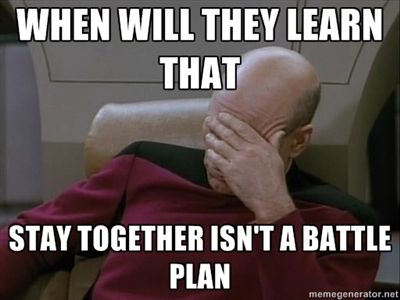So the way I like to set up my mechs for support. First I decided on whats the range I want to work with. Then I look for certain features that make the job easier.
Indirect fire support:
Pretty straight forward, bring missiles. And lots of them. Preferably a mech with lots of tubes and isn't too slow if your pugging. My choice of mech for this role is the Catapult c4 is running 4x LRM10's or my Griffin 1N runing 2 LRM15's, 3ML and a tag. Pretty straight forward again - team gets into a brawl, LRMs go out. A mech under LRM fire as good as dead or is not going to be focused on fighting back effectively.
My Timber wolf-S - 2 LRM 15, 2 C-ERPPC. A combination of direct and indirect fire support.
Never go into battle as an LRM boat without a means to counter ECM and to get your own locks. Tag and Bap, along with the Advanced Targeting Decay Module as essential to this role. Do not rely on your team to get locks for you especially when there are large distances in between you and the enemy team
For direct fire support I look for different things:
-High mounted weapon hard-points - Don't want to be hitting your team in the back with low mounted arm weapons. And its better not to have to be fully exposed to fire.
-Mobility - See someone that needs help or an angle that needs working? need to be able to re-position quickly enough.
My choice of mech for this role as long been the Catapult K2 and now Jester. Jager mech with it's high mounted ballistics is also a good choice. Other mechs can work as well, but I prefer weapons that are not mounted too much lower than the cockpit.
Close in support:
-For helping your team in a fight, I generally chose a mech that is faster than the big guns. Mobility and torso twist as well as arm actuators help a lot for me.
For this dirty job I pick my Griffon N's. Shielded on the left side, fast enough to run into the fight and get behind the offending mech.
You want your mech to be fast enough to duck in and out of cover, torso twist damage off, run circles around priority heavy and assault mechs AND be loose enough to have as many firing angles as possible ( Torso twist and arm actuators). Should also have a big enough punch or at least be annoying enough so it cannot be ignored.
So whats the best ways to play these beasts?
- Missile boats.
Since close range offense will probably not be as strong, best to stick behind your team. Do not go off on your own, and do not lead the attack!
For most effective use of missiles, watch the proximity of your team to the enemy. If your target is surrounded by friendlies on the map, chances are that's a good target with a good strong lock.
If you want to pick your own targets, the flanks is a good place to do so - a place where you have line of sight, but still have mechs close by to help you...but not too many in the way blocking your line of sight. If you have a spotter - Communicate with them and vice versa. Even in pugs. Play to win! Full Fuego! Make sure to have TAG and BAP at least.
- Direct fire support mechs.

In my Catapult k2, Jester and Timberwolf, I do a lot of flanking from range. These mechs are setup for ranged battle with some short range capabilities but that is not where they belong. Staying right on the group is not a good idea as your team will usually set up in places that don't don't work that well for the task you are trying to accomplish ( if you a right in there with them ) In this role its important to have battlefield awareness. Know where to setup that will give your team the most cover and won't leave you vulnerable. You want vast lines of fire to use your range with a good escape in hand. Don't forget to not go too far off from your team.
- Short range support:
Pretty basic, stick with the team and in areas with cover. Wait for the fight to start and make sure there are no 1 on 1 fights going on. Get in there and be a force multiplier when the opportunity presents itself. Make sure not to get overextended and that you always have cover you can get to.




















